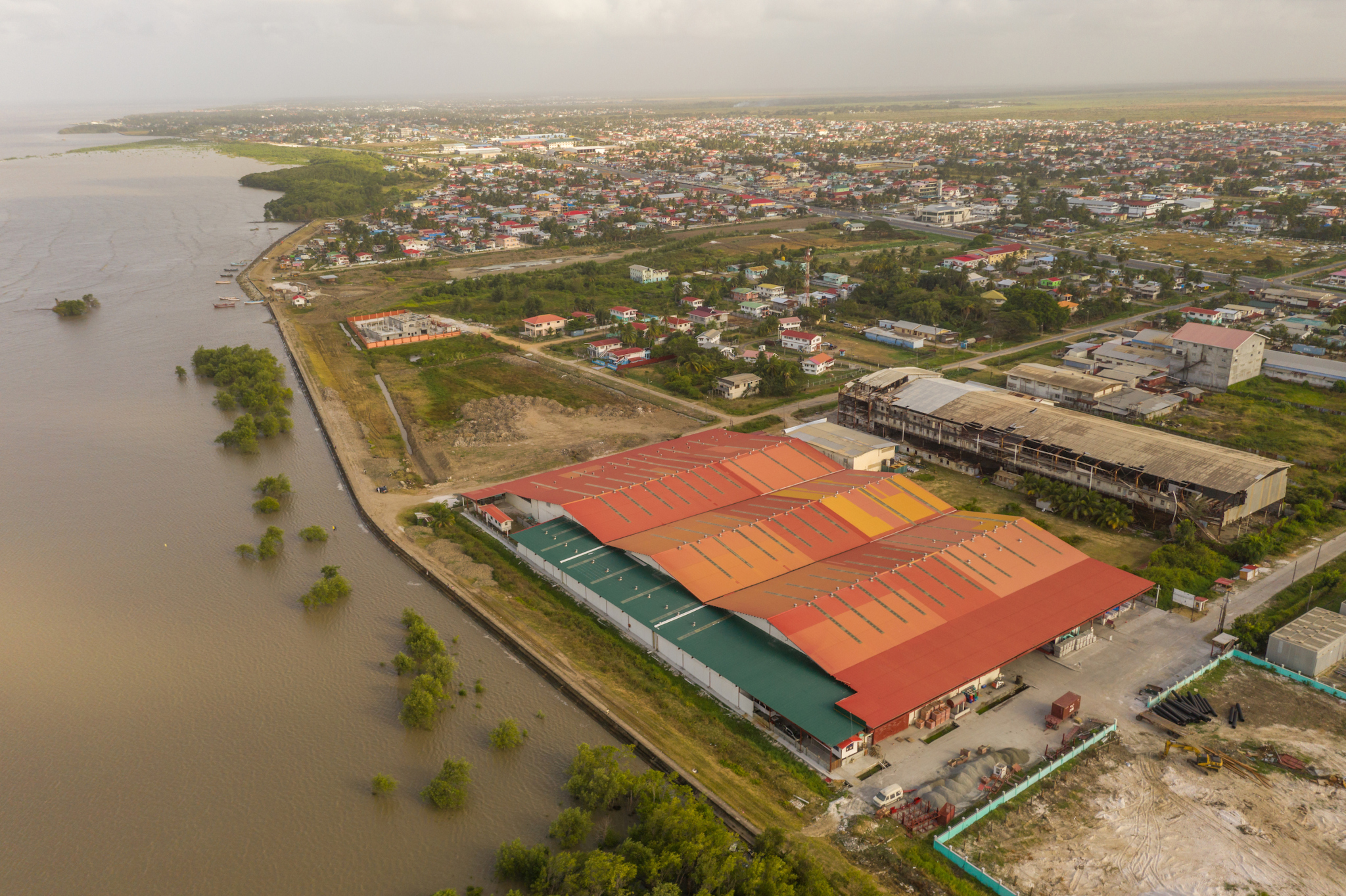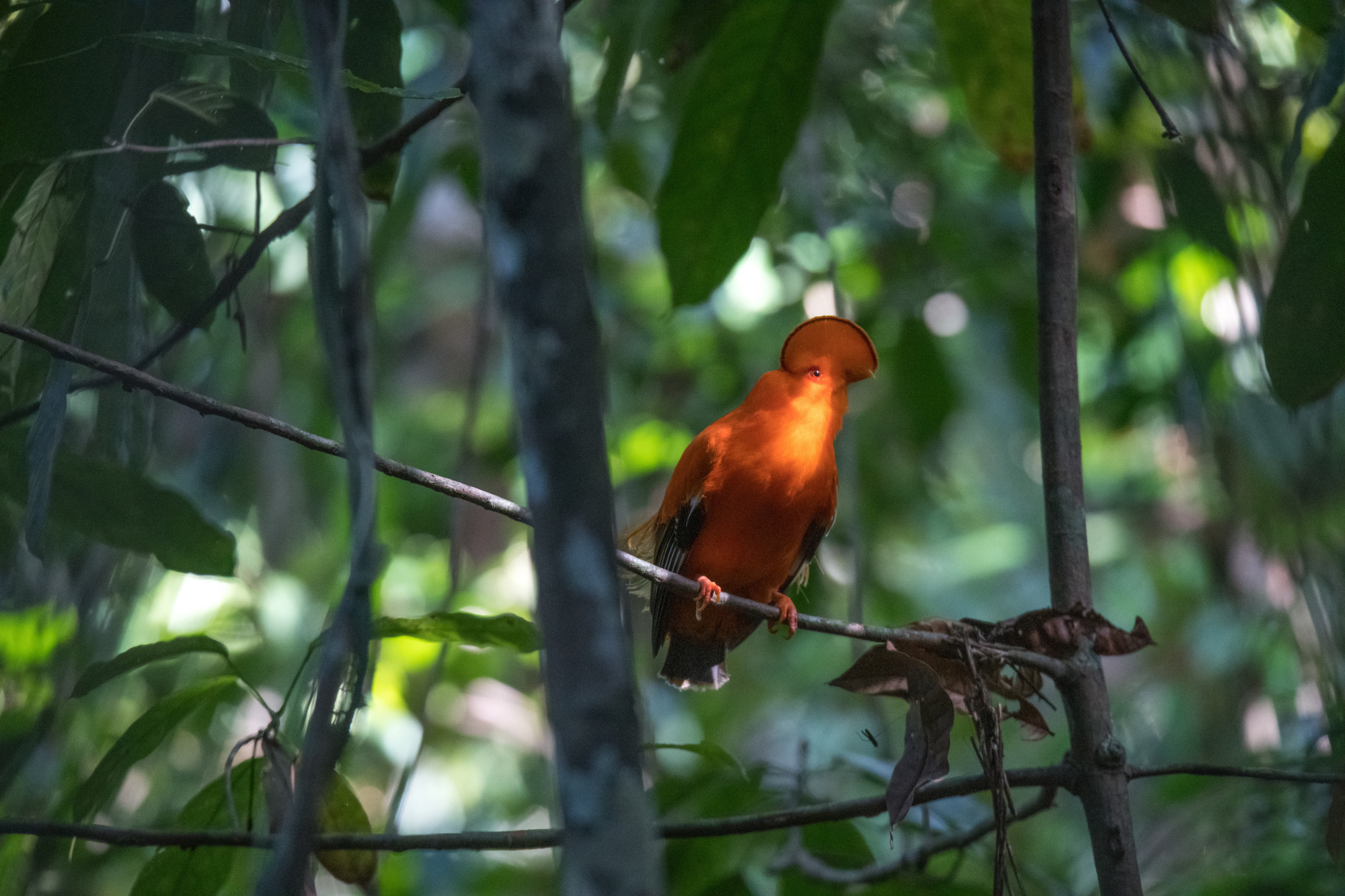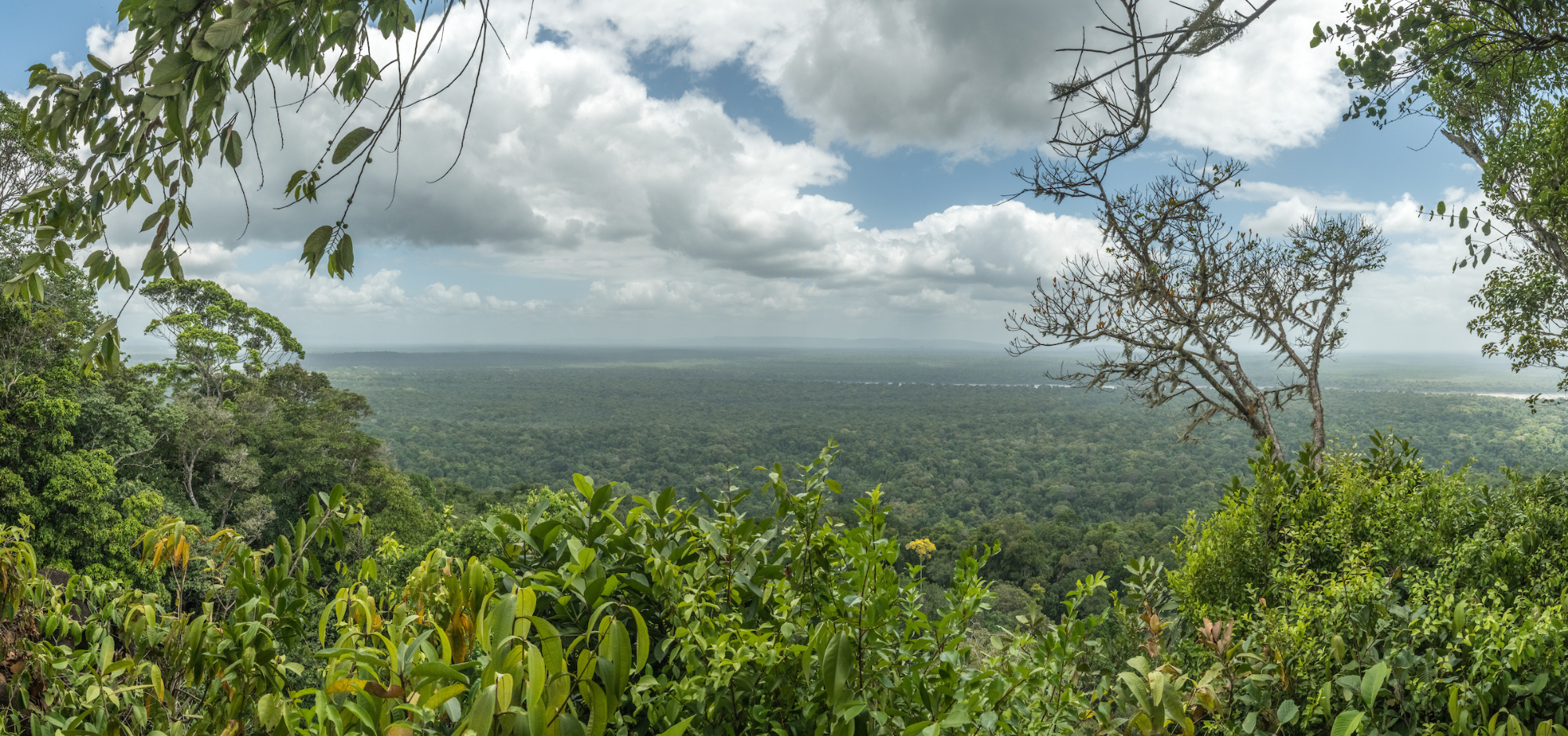Guyana Offshore
Location:
Offshore GuyanaProject risks:
Environmental Destruction, Litigation, Social HarmCompanies:
approximate location
ExxonMobil’s Deepwater Oil Spree Puts Guyana at Risk
ExxonMobil’s deepwater drilling off the coast of Guyana is putting the country at risk. Guyana is one of the world's countries most threatened by rising sea levels. 80 percent of the nation's 791,000 inhabitants live on a dip of land 1.8 m (5.1 ft) below sea level.[1][2] Storms are already overtopping the hip-high seawall, flooding the capital Georgetown and farmers’ land.[3][4] In times of climate change and extreme weather events, ExxonMobil is spearheading an oil and gas surge in Guyana.
Note: Reputational risk projects on GOGEL are updated annually. This article was last updated November 5 2024.

Paradise Under Threat
Every year, visitors from near and afar come to see Guyana's rare birds like the Harpy Eagle, the Capuchin bird and the bright orange Cock-of-the-Rock.[5][6][7] Guyana still has one of the largest unspoiled rainforests in South America.[8] The tropical forests are home to jaguars, pumas, giant otters, giant armadillos and capuchin monkeys.[9][10][11] Guyana's abundant wind, water and sun are the perfect basis to develop renewable energies.[12]

In 2019, Guyana received the award for the World's No.1 Ecotourism destination.[13] There are very good reasons for this. Tropical rainforest covers almost 80% of the country.[14] Further south lie the Rupununi savannah lands.[15] In the north, there is Shell Beach, the only officially protected area along the country’s coast.[16] This is where rare sea turtles such as the Leatherback, Olive Ripley, Hawksbill and Green Turtle lay their eggs and hatch their young.[17]19229

Moving in on Guyana
The oil fields ExxonMobil has discovered in the Guyana-Suriname Basin together with Hess and CNOOC are huge and manifold. In 2015, the companies hit a gigantic oil field in their Stabroek Block.[18] ExxonMobil drilled a 7,176 m (23,543 ft) deep well to reach the oil.[19] The well, Liza-1, lies 190 km (118 mi) off Guyana’s coast.[20]
ExxonMobil is eagerly betting against the climate to quickly find and extract as much oil as possible out of the deep sea.12373 The company is putting all its weight behind the Guyana plans. In December 2019, ExxonMobil, CNOOC and Hess delivered “First Oil” from the Liza 1 project.[21] By now, ExxonMobil has approved 6 offshore projects in Guyanese waters.19426 In April 2024, ExxonMobil announced that it would spend USD $12.7billion on its newest Guyanese oil project, Whiptail.19427 ExxonMobil’s plans to pump up to 250,000 barrels per day out of the seafloor at Whiptail clearly show that the company is recklessly opposed to the energy transition. It is prepared to leave investors as well as the nation of Guyana exposed to the risk of stranded fossil fuel assets in exchange for short term profits. ExxonMobil is not alone: the oil discoveries in Guyana have sparked a gold rush. Other international oil and gas companies like TotalEnergies and Qatar Energy are circling around Guyana's undeveloped oil blocks.19428 Chevron's proposed USD 53 billion acquisition of Hess Corporaition has been widely seen as a move to acquire Hess' share in Exxon's favorable deal with Guyanese authorities.19429 ExxonMobil, ever attached to its Guyanese crown jewel, is doing all it can to stop the deal and keep Hess' share for itself.19430 Neighboring Venezuela has recently reignited a centuries-long dispute over the territory of Essequibo, a stretch of land accounting for two thirds of Guyana's territory, in the hope of laying claim to the oil discoveries.19431 The country held a referendum in December 2023 to claim sovereignty over the Essequibo region, leading to rising tensions and military mobilization on the borders.19432 Brazil has had to step in as an intermediary.19434
Breaching Guyana's Strict Environmental Standards
ExxonMobil, Hess and CNOOC are better at finding oil than at meeting Guyana’s environmental standards. The Environmental Impact Assessments for ExxonMobil’s oil projects have been flawed and might not have met Guyanese legal requirements.1238112383 For its first project, Liza 1, ExxonMobil has been accused of failing to spend the necessary time and money to engage marine scientists to map the plants and animals that live and migrate along the South Caribbean coast.[26] The threats to fish and marine mammals in the open sea, to crabs and smaller sea animals in the shallow coastal waters, and to birds and fish that breed in the mangroves will grow as oil exploitation continues.
Deadly Seismic Exploration
Searching for oil and gas in the deep waters off Guyana’s shore comes with devastating effects for marine life.19229 The geophysical surveys to understand the location and the extent of oil and gas deposits include methods that strongly impact marine species. The Center for Biological Diversity describes the effects of seismic surveys: “Offshore oil and gas exploration uses deafening seismic surveys that generate the loudest humanmade sounds in the ocean, short of those made by explosives. Seismic testing involves blasting the seafloor with high-powered air every 10 seconds and measuring the echoes with long tubes to map offshore oil and gas reserves. These blasts disturb, injure and kill marine wildlife around the clock for years on end.”[27]
ExxonMobil and other oil companies continue to explore for oil and gas off the coast of Guyana. The company has secured authorization to drill 35 more exploration wells in Stabroek between 2023 and 2027.12385 The exploration is likely to result in grave harm to rare sperm whales and other marine animals. It can disturb their migration pathways as well as their feeding and breeding habits. All of this is happening despite the global energy market’s irreversible shift to renewable energy, and the International Energy Agency (IEA)’s warning that there should be no new oil production.19229
What Happened to Guyana’s Benefits?
Guyana’s former government negotiated contracts that shifted all the risks to Guyana and all the benefits to ExxonMobil, Hess and CNOOC.[28]12387 It is not surprising that the contractual conditions are so one-sided. The former president secretly accepted a signing bonus of USD 18 million from ExxonMobil and illegally placed it in a secret account.12389
The Stabroek Production Sharing Agreement with the Guyanese government is highly favorable to ExxonMobil, CNOOC and Hess.[30][31] The government has actually admitted that the agreement is weak.12393 The Vice-President, in his former role of Leader of the Opposition, denounced the contract as one that would harm Guyana but has since become its staunch defender.1922912397 The Production Sharing Agreement exempts ExxonMobil, Hess and CNOOC from paying significant annual income taxes.12399 It also dictates that Guyana first has to pay all of ExxonMobil's development costs before it gets its share of the profit.[33]12401 Guyana’s contract with ExxonMobil is structured in such a way that the company can continue to charge Guyana for every newly developed oil field and for every failure such as a dry well. While the companies cash in, many people in Guyana are becoming poorer.12403 With prices increasing, families have to decide whether to pay for food, electricity or childcare.12405
Adding to the concerns, the former head of the Guyanese Environmental Protection Agency has questioned the insurance of Exxon’s projects. Exxon operates through a small offshore subsidiary. In the event of an oil spill, the people of Guyana may well end up bearing the costs of cleaning up pollution, shutting down the wells safely and compensating their Caribbean neighbors.19229
In-Country Resistance
The Guyanese population is increasingly opposed to the oil project. Court cases against the human and environmental consequences of the oil projects in Guyana are piling up. International lawyer Melinda Janki and her clients convinced the court to cut ExxonMobil’s environmental permits down from 23 years to 5 years, the legal maximum in Guyanese law.19229 ExxonMobil has also been forced to provide an additional USD 2 billion guarantee for its first offshore project. The decision came after a court ruled that ExxonMobil, Hess and CNOOC’s oil spill insurance was too weak.19229 In May 2021, a scientist and an indigenous Wapichan youth from the Rupununi region in southern Guyana filed the first ever climate change-related constitutional case in the Caribbean. The case challenges more than 4 billion tons of potential greenhouse gas emissions. That is more than any other climate court case.19229 They argue that the entire oil project violates their right to a healthy environment.19229 The court's decision is still pending, but more cases are likely to follow in the future and pressure on Exxon and its oil allies will inevitably increase.
Groups working in Guyana: A Fair Deal for Guyana - A Fair Deal for the Planet (Guyanese grassroots people’s movement), Justice Institute Guyana, Organisation for the Victory of the People, Transparency Institute Guyana Inc.
Additional resources:
https://www.youtube.com/watch?v=IwQZ_Qp8Vao
Further reading:
https://www.cijn.org/can-guyana-avoid-the-oil-curse/
https://melindajanki.wordpress.com/oil-gas-2/
Sources: